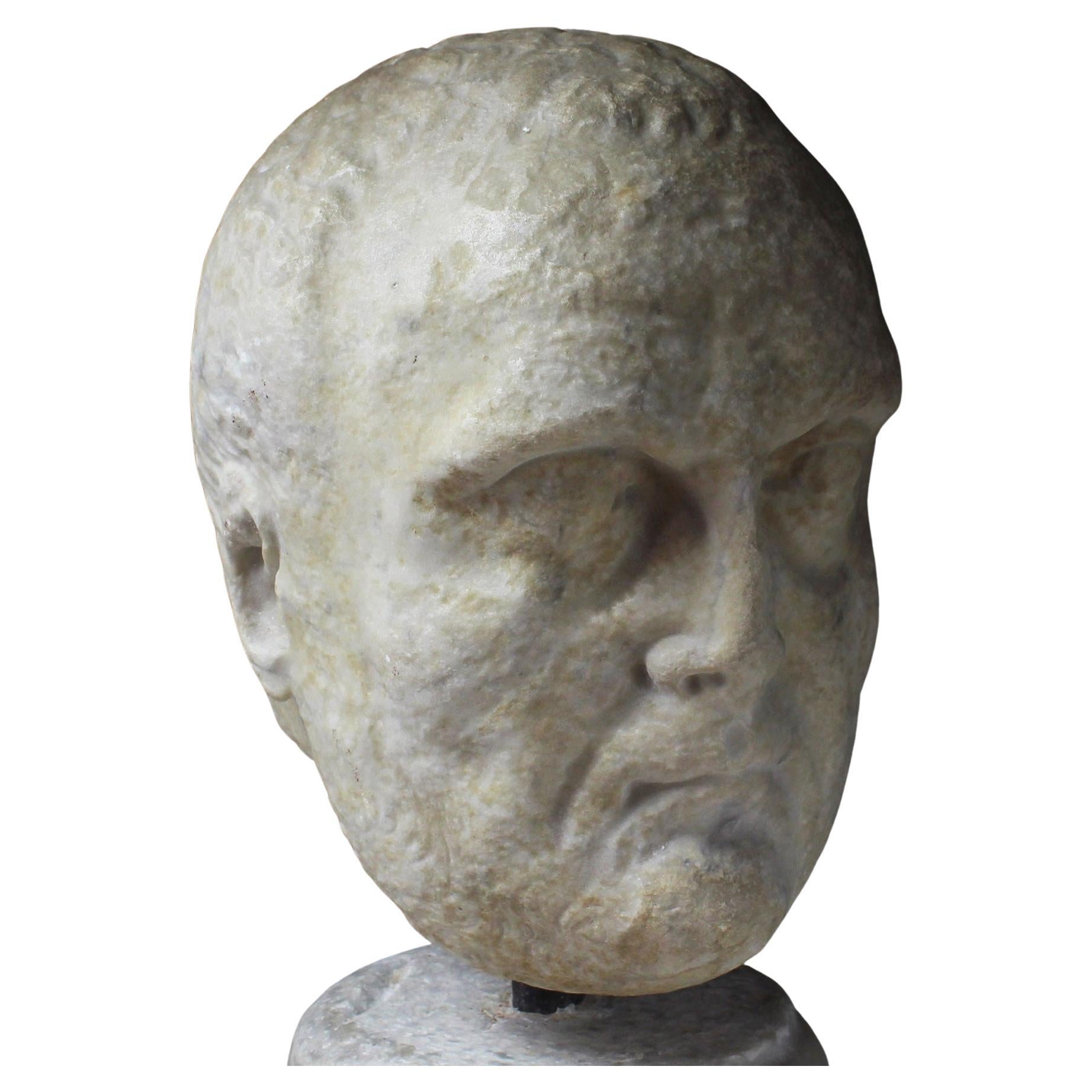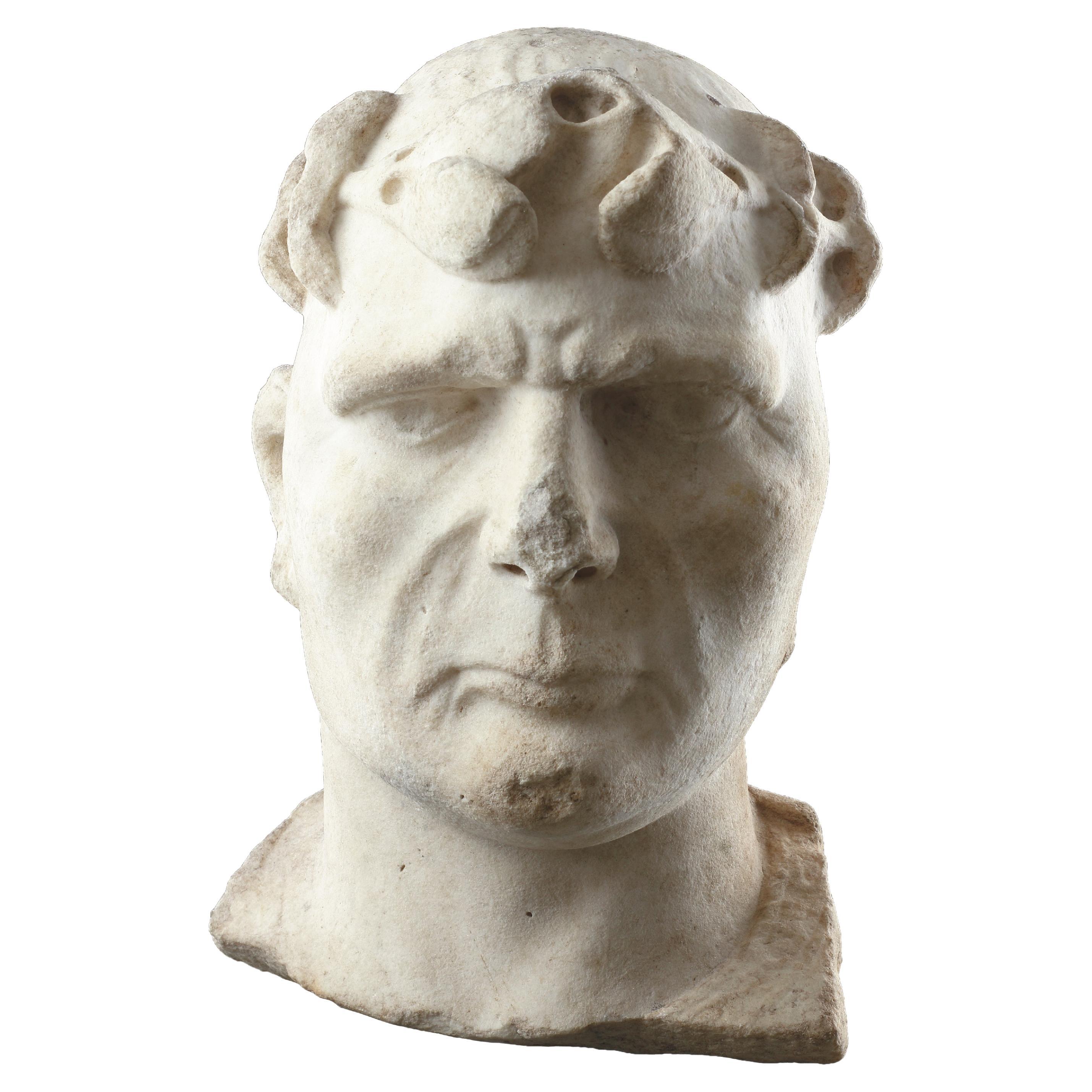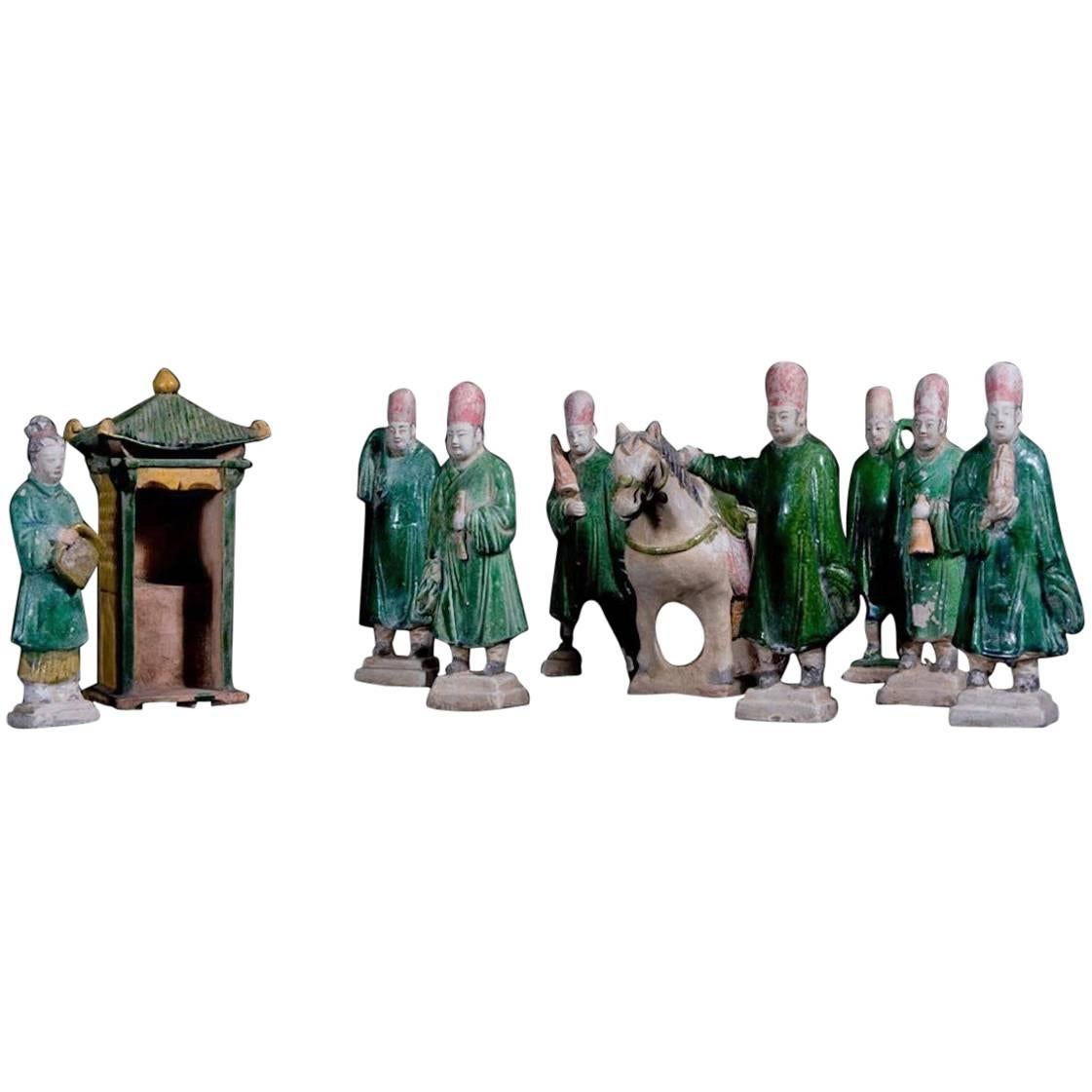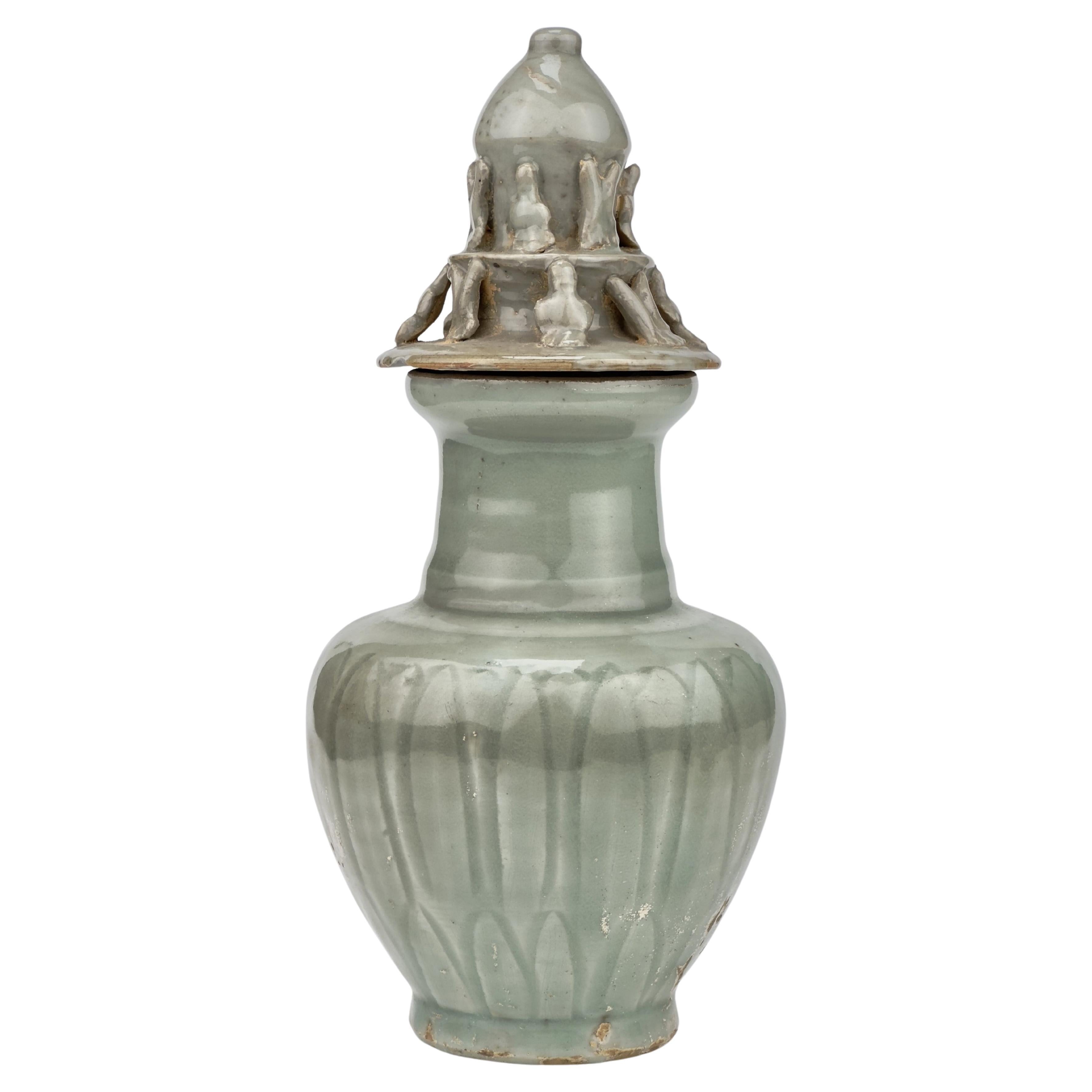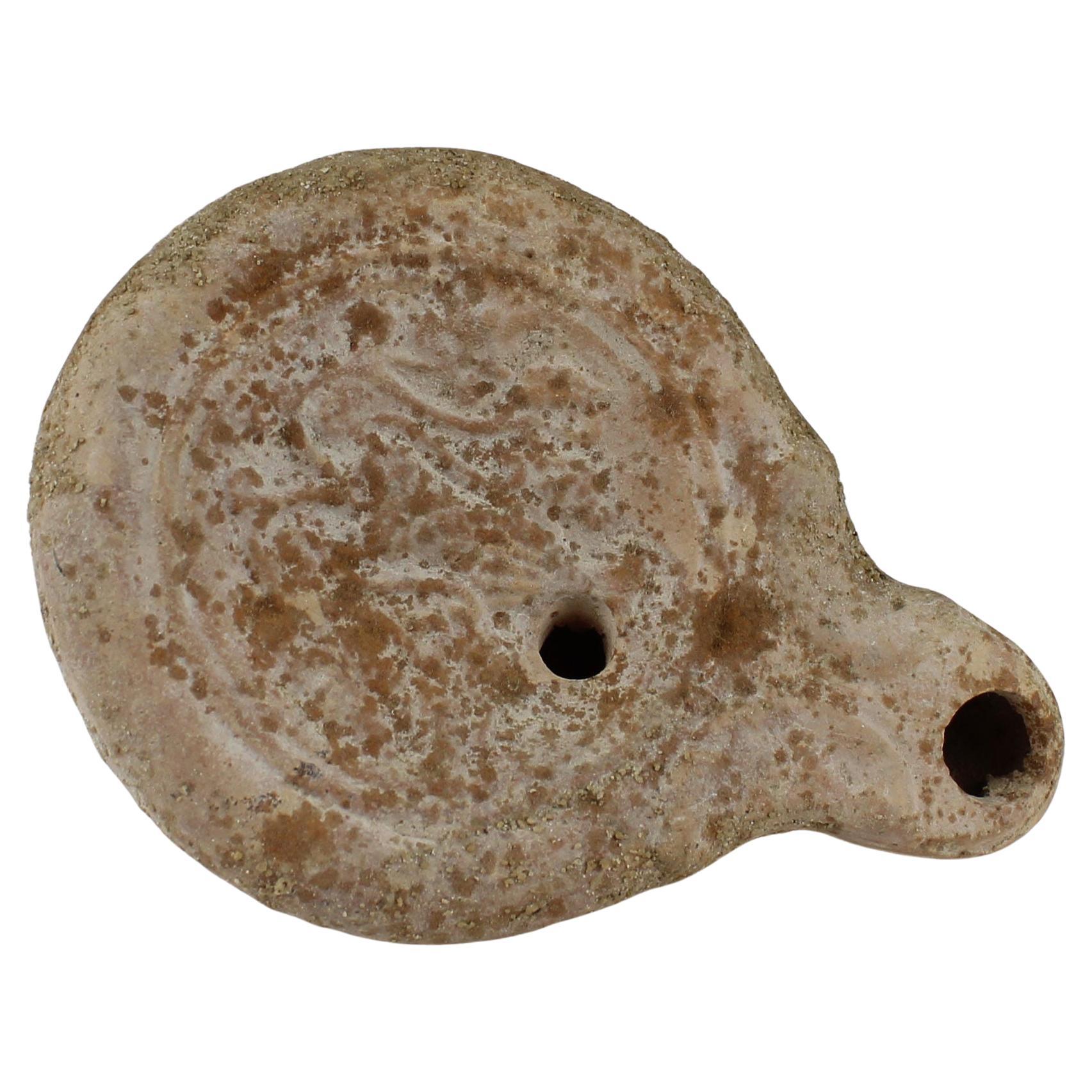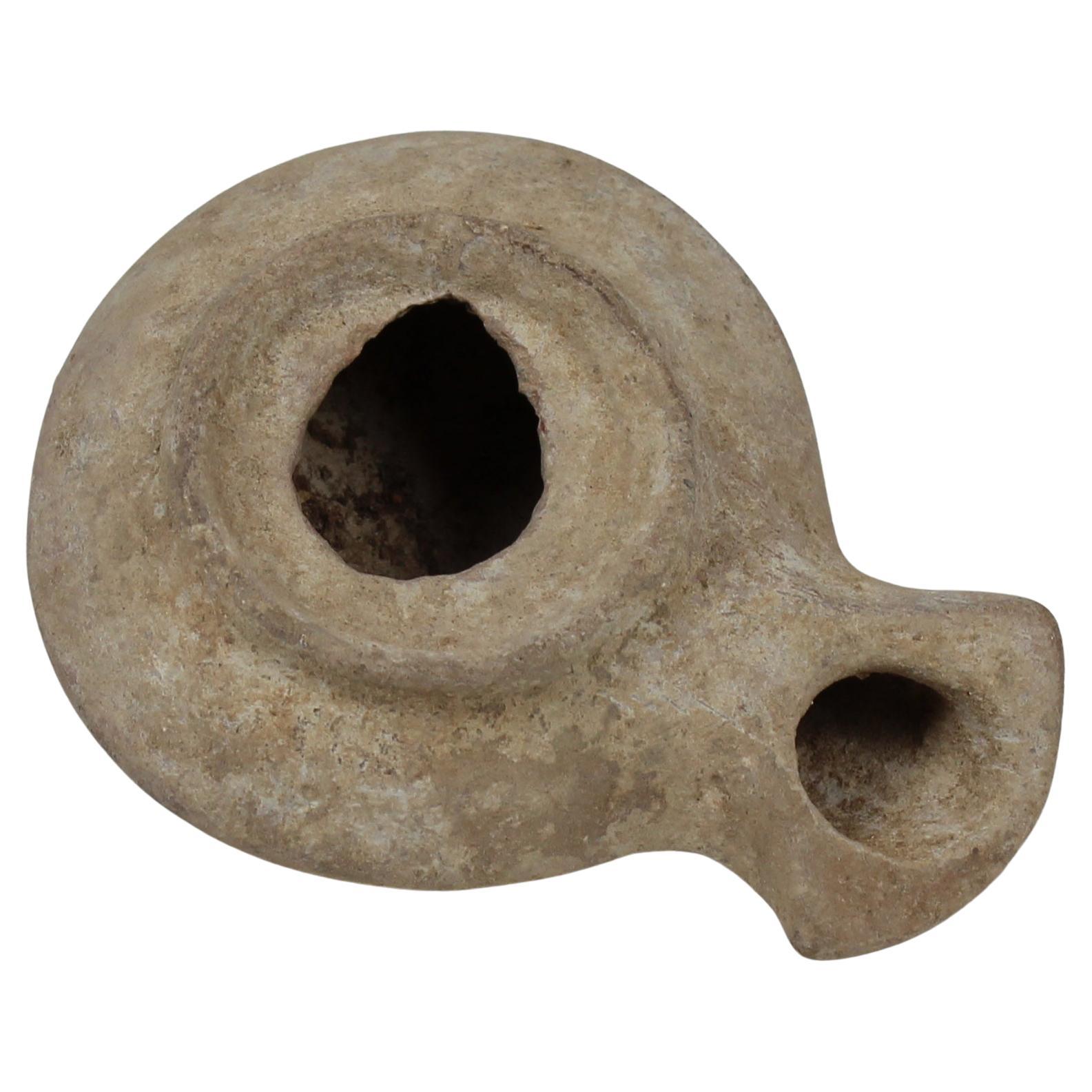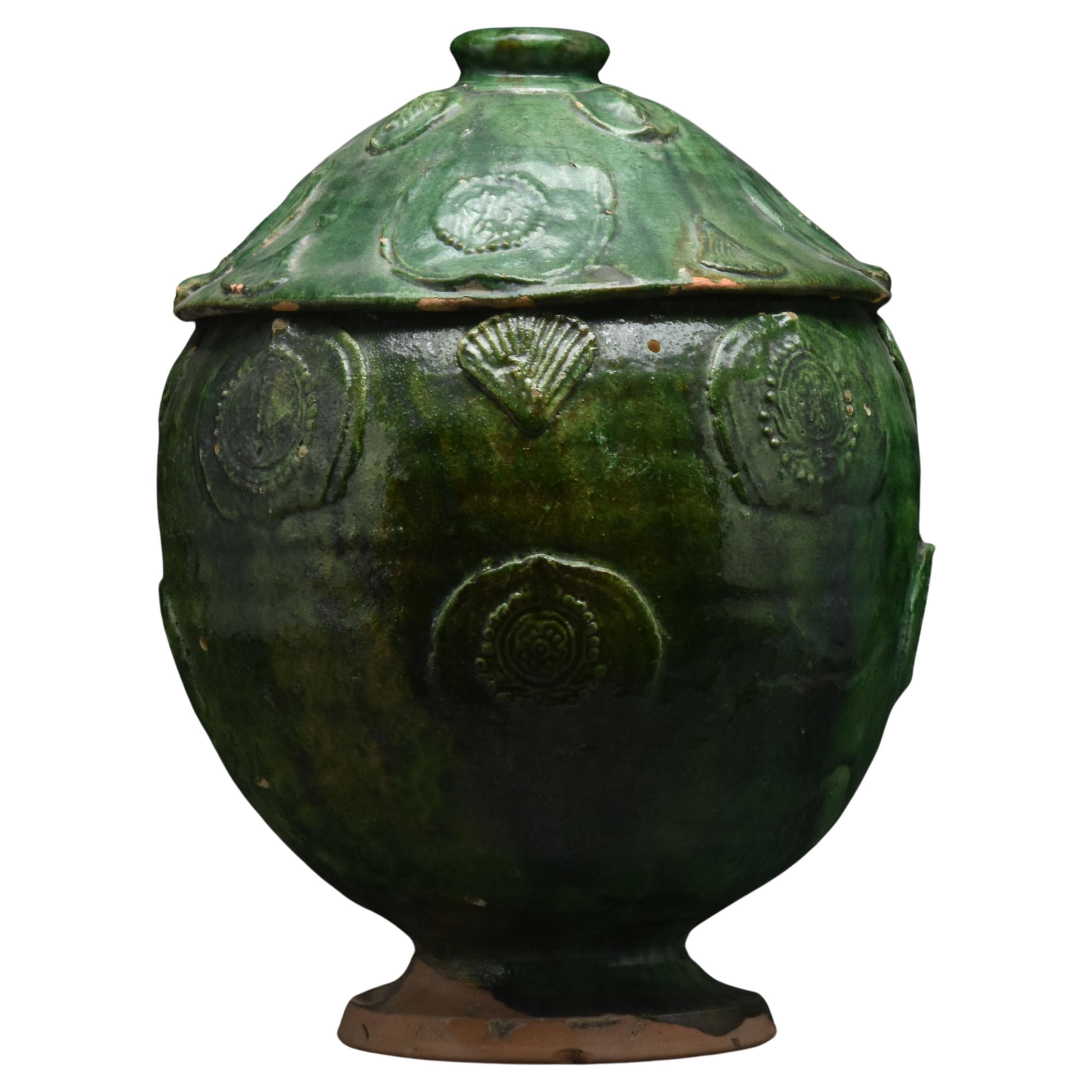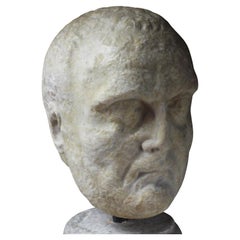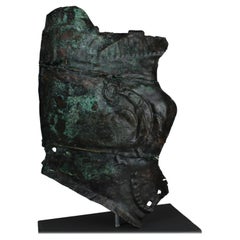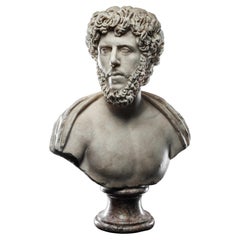
Roman Funerary Bust of Man
View Similar Items
Want more images or videos?
Request additional images or videos from the seller
1 of 10
Roman Funerary Bust of Man
About the Item
- Dimensions:Height: 12.8 in (32.5 cm)Width: 11.03 in (28 cm)Depth: 6.03 in (15.3 cm)
- Style:Classical Roman (Of the Period)
- Materials and Techniques:
- Period:
- Date of Manufacture:3rd Century A.D
- Condition:
- Seller Location:EL CAMPELLO, ES
- Reference Number:1stDibs: LU7382232384412
About the Seller
5.0
Vetted Seller
These experienced sellers undergo a comprehensive evaluation by our team of in-house experts.
Established in 2011
1stDibs seller since 2022
8 sales on 1stDibs
More From This SellerView All
- Roman portrait head of a PatricianLocated in EL CAMPELLO, ESITEM: Portrait head of a Patrician MATERIAL: Marble CULTURE: Roman PERIOD: 1st Century B.C DIMENSIONS: 250 mm x 175 mm x 215 mm (without stand), Life-siz...Category
Antique 15th Century and Earlier European Classical Roman Antiquities
MaterialsMarble
- Roman statuette of Eros-HarpocratesLocated in EL CAMPELLO, ESITEM: Statuette of Eros-Harpocrates MATERIAL: Bronze CULTURE: Roman PERIOD: 1st Century B.C – 1st Century A.D DIMENSIONS: 82 mm x 31 mm CONDITION: Good condition PROVENANCE: Ex Ameri...Category
Antique 15th Century and Earlier Italian Classical Roman Antiquities
MaterialsBronze
- Roman military cheek piece of a helmet fragment with Jupiter’s eagleLocated in EL CAMPELLO, ESITEM: Military cheek piece of a helmet fragment with Jupiter’s eagle MATERIAL: Bronze CULTURE: Roman PERIOD: 3rd Century A.D DIMENSIONS: 180 mm x 123 mm CONDITION: Good condition PROVENANCE: Ex Alison Barker private collection, a retired London barrister, acquired between 1960s – 1990s BIBLIOGRAPHY: RUCINSKI, E., Get the picture?: Iconography of cheek pieces on Roman Imperial cavalry helmets...Category
Antique 15th Century and Earlier Italian Classical Roman Antiquities
MaterialsBronze
- Roman oil lamp with leaves and fruitLocated in EL CAMPELLO, ESITEM: Oil lamp with leaves and fruit, Type Bussiere B III 1 MATERIAL: Terracotta CULTURE: Roman PERIOD: 1st – 2nd Century A.D DIMENSIONS: 20 mm x 65 mm x 90 mm CONDITION: Good condit...Category
Antique 15th Century and Earlier Italian Classical Roman Antiquities
MaterialsPottery
- Roman oil lamp, Type ‘Herodian’, Kennedy 3, Hadad 4Located in EL CAMPELLO, ESITEM: Oil lamp, Type ‘Herodian’, Kennedy 3, Hadad 4 MATERIAL: Terracotta CULTURE: Roman, Judaea PERIOD: 1st Century B.C – 2nd Century A.D DIMENSIONS: 25 mm x 62 mm x 82 mm CONDITION: Good condition PROVENANCE: Ex Jerusalem private collection, acquired between 1975 – 1990. Comes with Certificate of Authenticity and Export license (If you live outside the European Union, We will have to apply for an export licence for your country and shipping will take 3 to 5 weeks.) Oil lamps used during the time of Herod, which falls within the period of the Second Temple in ancient Judea...Category
Antique 15th Century and Earlier Israeli Classical Roman Antiquities
MaterialsPottery
- Romano-Egyptian cartonnage mummy mask depicting a female headLocated in EL CAMPELLO, ESITEM: Romano-Egyptian cartonnage mummy mask depicting a female head MATERIAL: Linen and Gesso CULTURE: Egyptian, Roman period PERIOD: 1st Century B.C – 1st Century A.D DIMENSIONS: 20...Category
Antique 15th Century and Earlier Egyptian Classical Roman Antiquities
MaterialsGesso, Linen
You May Also Like
- Ancient Marble Portrait Bust of a Bearded Man possibly Lucius VerusLocated in London, GBThis impressive bust is depicted with head turned slightly to the right and gaze lifted. His eyes are articulated, with the pupils indicated with a drill, giving the face a striking realism. The shoulders are draped with a cloak. Straight brows sit beneath a mass of thickly curling hair, which continues to a full beard. It is worked with great skill, evident in the heavy drill work articulating and highlighting the voluminous curls, and the highly polished surfaces, giving the appearance of soft skin. The contrast between these textures gives a chiaroscuro affect which is one of the main traits of the best Antonine busts. Roman marble portraits reached their apotheosis of craftmanship and technique under the Antonine emperors, as is evidenced in this masterful bust. The evolution of the style may be traced back to the emperor Hadrian, who was the first emperor to wear a full beard. The articulation of pupils and iris appears on busts of his lover Antinous, a novelty which continued in later Antonine portraits, such as this one. The features of this bust point to a possible identification of Emperor Lucius Verus...Category
Antique 15th Century and Earlier Antiquities
MaterialsMarble
- An Over Life-Size Powerful Roman Male Portrait Head of Constantine the GreatLocated in London, GBAn Over Life-Size Powerful Roman Male Portrait Head of Constantine the Great (c.272 - 337) Wearing the ‘Imperial Oak Wreath’ the decorative border of his ‘tunic’ can still be clearly seen on the left hand side Marble Italy Early 4th Century AD SIZE: 38cm high, 24.5cm wide, 25cm deep - 15cm high, 9¾ ins wide, 10 ins deep PROVENANCE: Ex Private collection, Cambridge, England note: For a very similar over life-size portrait head of Constantine I (the Great) wearing an identical wreath dating from the early 4th century AD see: Yorkshire Museum, York, inv. no. ‘YORYM’ 1998.23. Found in ‘Eboracum’ (York) in 1823 LITERATURE: Rinaldi Tufi, S., Yorkshire. ‘Corpus Signorum Imperii Romani (Great Britain)’; vol. 1, fasc. 3, Yorkshire. Oxford University Press, 1983; 23, no. 38, pl. 12 In AD 306, Constantine was hailed emperor in the Roman city of York; he was the first emperor to convert to Christianity. Born in Naissus, the son of Flavius Constantius, and Helena, a woman of low birth and a christian. Following his campaigns in the eastern provinces, Constantine was recalled in 305 AD to fight alongside his father in the province of Britannia. After his father’s death in 306 AD, Constantine was acclaimed as ‘imperator’ by his army at Eboracum (York) eventually being declared victorious after the civil wars against emperors, Maxentius and Licinius to become sole ruler of the Roman Empire in 324 AD. Constantine’s Christian belief cannot be underestimated, establishing the foundations of ‘Western Christendom’. In 313 AD he was influential in the proclamation of the ‘Edict of Milan, declaring tolerance of Christianity within the Roman Empire. The Church of the Holy Sepulchre, the purported site of Jesus’s tomb...Category
Antique 15th Century and Earlier Italian Classical Roman Antiquities
MaterialsMarble
- Impressive Terracotta Funerary Procession - Ming Dynasty, China '1368-1644 AD'Located in San Pedro Garza Garcia, Nuevo LeonImpressive Funeral Ensamble of 10 Terracotta Glazed Figures in green and caramel colors depicting a votive procession with a palanquin, his four carriers, a horse, a stableman, two musicians, and an offering carrier. This ensemble is accompanied by a Certificate of Authenticity, and Certificate of Expertise by Jean-Yves Nathan - Specialist in Asian Arts for the CEDEA (The European Confederation of Art Experts). Burial figurines of graceful dancers, mystical beasts, and everyday objects reveal both how people in early China approached death and how they lived. Since people viewed the afterlife as an extension of worldly life, these figurines, called mingqi, sometimes referred as “spirit utensils” or “vessels of ghosts” disclose details of routine existence and provide insights into belief systems over a thousand-year period. The Ming dynasty was the ruling dynasty of China – then known as the Empire of the Great Ming – for 276 years (1368–1644 AD). Founded by Chu Yuan-chang, the rebel leader that was successful in removing the mongols from the throne. Chinese control was re-asserted in China and eastern Asia. Literature became more important, schools were created, and the justice system was reformed. The Ming dynasty is described by some as "one of the greatest eras of orderly government and social stability in human history,” was the last imperial dynasty in China ruled by ethnic Han Chinese. The practice of burying ceramic objects with the deceased went into decline from the 10th to the 14th Century AD. There was a revival in placing miniature representations of glazed terracotta objects such a furniture, food offerings, horses, miniature statues...Category
Antique 15th Century and Earlier Chinese Ming Antiquities
MaterialsTerracotta
- Carved 'Longquan' Celadon-glazed Funerary vase and cover, Song dynastyLocated in seoul, KRThe vase features a ribbed body, subtly enhancing its graceful contours, and is topped with a uniquely sculpted lid adorned with figurative elements. Period : Song Dynasty Type : Ce...Category
Antique 15th Century and Earlier Chinese Ming Antiquities
MaterialsCeladon
- Statue of Man African ArtLocated in Milano, ITBeautiful painted wood statue from the 50's, belonging to African art. The statue of a man African art is made entirely of painted wood, depicts a man with...Category
Vintage 1950s North African Arts and Crafts Antiquities
MaterialsWood
- Chinese Song Dynasty Green Glazed Buddhist Funerary Jar and Cover - TL TestedLocated in London, GBA vibrant Song Dynasty funerary urn that captures the short-lived, yet fruitful period of Song dynasty artistic production. The body is globular ...Category
Antique 15th Century and Earlier Antiquities
MaterialsTerracotta

